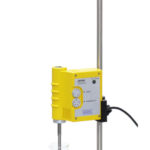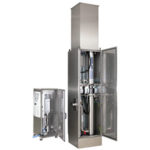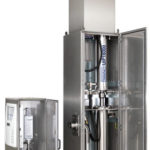MENUMENU
Hielscher Ultrasonic’s ultrasound technology, often simply called ‘ultrasonic probes’ or ‘ultrasonics’, can be loosely split into three categories: laboratory, scale-up and industrial devices.
The laboratory devices range from small handheld systems for the mixing, homogenising and dispersion of small volumes of liquids or solids into liquids.
The scale-up systems are benchtop size and sit comfortably inside a standard fume hood. They are ideal for process optimisation on a scale-up/pilot plant scale and can be used additionally for deagglomeration, and particle grinding and milling.
The larger scale industrial production devices can process a flow of up to 1000s of litres per hour.

SciMed offers the entire Hielscher range. The range can be split into two categories: • Laboratory devices• Industrial devices The Laboratory devices range from small handheld systems for mixing and homogenizing small volumes of liquid up to larger stand and clamp-held devices which can process a flow of up to 50 litres per hour. The Industrial devices are tailored more towards small scale production devices for personal bio-fuel production, to large industrial scale for production scales up to 2000 L per hour. Designed for the Lab: Compact and extremely versatile, they…

The UP200S device can run continuously – 24 hours/7 days, if needed. By using the laboratory devices in combination with flow cell reactors, you can process larger sample volumes. In this case, the liquid is pumped into the reactor made of glass or stainless steel. For example, a UP400S (400 watts) can process approximately 10 to 50 litres per hour. There it is exposed to defined intense sonication before it reaches the exit of the reactor cell. In order to cool heat-sensitive material during sonication, the flow cells are jacketed to improve heat dissipation. …

Ultrasonic output power is a key factor for process scale-up. In order to process larger volumes in a given amount of time, you need to deploy more power. The power per device ranges from 500 watts to 16 kilowatts. For typical liquid processing applications, four or more units are combined in clusters for enhanced redundancy and capacity adaptability. For example, a cluster of 6 x UIP10000 (60kW) may be used for the processing of up to 50 cubic metres of biodiesel per hour. High power equipment uses more electricity. Considering rising energy prices, this affects the costs…